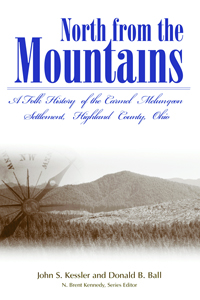Problems with Plaçage: Historical Imagination and Femmes de couleurs libres in Colonial and Antebellum New OrleansPosted in Articles, History, Identity Development/Psychology, Louisiana, Media Archive, Slavery, United States, Women on 2011-04-18 05:25Z by Steven |
Bridges: A Journal of Student Research
Coastal Carolina University
Issue 3 (Winter 2009)
Philip Whalen, Associate Professor of History
Coastal Carolina University
This essay compares two approaches to understanding the condition of free women of color who struggled to maximize their autonomy and sustain social relations within the repressive environment of colonial and antebellum New Orleans. While recent scholarship squarely addresses how free women of color constructed and sustained a viable Creole heritage, it must reckon with a tradition of primary sources written by moralists, and itinerant observers—ranging from Fanny Trollope and Gustave de Beaumont to Amos Stoddard and Grace King—whose analysis of the daily lives of Creole women was suspect in that it drew disproportionate attentions to the sexual activities of free women of color with white men.
In Louisiana the highest position that can be held by a free woman of color is that of a prostitute… She raises herself by prostituting herself to the white man.
—Gustav de Beaumont, Marie (1835)Free women of color, or filles de couleurs, occupied a unique and precarious social position in late-eighteenth and early-nineteenth century Louisiana. Legally defined as being of no more than ¼ African ancestry but commonly identified as belonging to a class of free persons exhibiting some degree of color (Garrigus, 1988, p. vii and Berlin, 1998), they rejected identification with black slaves and free whites in order to construct distinct identities for themselves in a racially oppressive and sexually exploitive environment (Gould, 1996, p. 193). The strategies they employed to advance and protect their interests illustrate how they tackled the circumstances and conditions that defined their struggle. These ranged from taking advantage of their slim but not inconsequential legal rights, to educating themselves, to holding and transmitting property, to developing exclusive community networks, to cornering various market activities, and engaging in a variety of legal and extra-legal personal unions.
From the first introduction of slaves to the early twentieth century, Louisiana’s efforts to legally establish a hierarchy of racial identification—especially where Creoles and “mixed bloods” were concerned—were bedeviled by competing identity claims, a disorderly population (Spear, 1999, p. 155), and an environment in which “antimiscegenation measures were flagrantly disregarded” (Lachance, 1994, p. 214). In fact, Doris Garraway notes, “the class of free people of color was quite diverse in gender, color, and circumstance. Referred to variously… the free people of color included former slaves and the descendants of all skin tones” (2005, p. 211). It should also be remembered that early nineteenth-century accounts described white creoles in terms of ethnicity and heritage rather than skin color. Amos Stoddard, for example, described the “Creoles, or native inhabitants” in his Sketches Historical and Descriptive of Louisiana as partly the descendants of the French Canadians and partly of those who migrated “intermixed with some natives of France, Spain, Germany, and the United States, and in many instances the Aborigines” (1973, p. 323). Despite contradictory evidence provided in the narratives of novelists, historians, moralists, and other chroniclers of life in New Orleans who frequently observed that Creole women resembled “the women of Cadiz and Naples and Marseilles; with a self possession, ease, and elegance which the Americans seldom possess” (King, 1920, p. 273), considerations of ethnicity, lineage or linguistic (especially French, German, Caribbean) identity rarely, in the final analysis, inhibited them from using the preferred racial schemas to taxonomize Louisiana’s gens de couleurs. The gens de couleurs, wrote Grace King:
were a class apart, separated from and superior to the negroes, ennobled, were it by only one drop of white blood in their veins…. To the whites, all Africans who were not of pure blood were gens de couleurs. Among themselves, however, there were jealous and fiercely guarded distinctions; mulattoes, quadroons, octoroons, griffes, each term meaning one more generation’s elevation, one degree’s further transfiguration in the standard of racial perfection; white blood. (1920, p. 333)
This inferior racial identity projected onto gens de couleurs was compounded by moral and social prejudices. Assumptions hardened into received opinion—easily detected in contemporary literature, memoirs, and histories—as racial prejudices were translated into laws designed to increase the legal distinctions between different racial groups were legislated when Louisiana became part of the Unites States (including the reestablishment, by the Louisiana Legislature of the French Code Noir of 1724 as the Black Code in 1806), and New Orleans Creoles evolved into a separate and more self-conscious ethnic caste with fewer exogamous marriages by the mid nineteenth century (Spear, 1999, pp. 101-153 and Lachance, 1994, p. 213, p. 229 and pp. 233-35)…
Read the entire article here.

